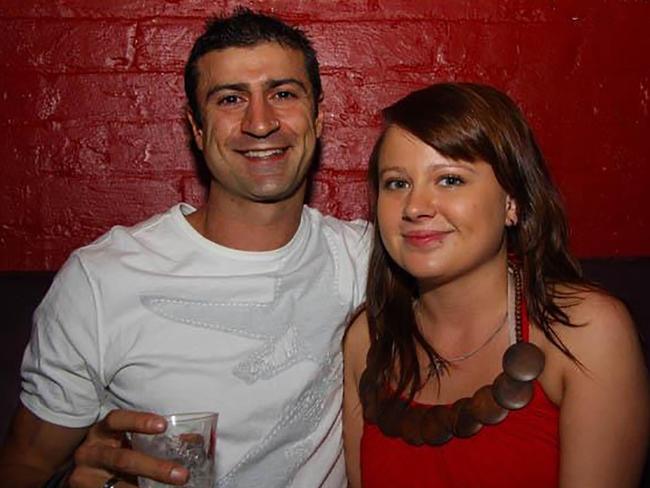Shandee’s Story shakes the pillars of power
A young woman. A death in a country town. And nine years later, potentially monstrous implications for Queensland’s criminal justice system.

This story has gone from Boddington St in the northern Queensland cane town of Mackay to George St, Brisbane, home to the state’s citadel of power.
It began with the horrific and bloody murder of a young woman just 100m from her home, and has now produced a government inquiry with potentially monstrous implications for Queensland’s criminal justice system.
The story started with the very public death of Shandee Blackburn, just 23, and after several years has taken us beyond the veil of ordinarily private scientific research and into the previously hidden machinations of public servants and government departments.
When The Australian newspaper’s national chief correspondent Hedley Thomas began investigating the 2013 murder of Blackburn, his belief was that this cold case could ultimately be solved and justice be brought to her family.
So he began an investigative podcast, Shandee’s Story.
Blackburn had been in a relationship with a man named John Peros, a fit and talented athlete with a seemingly good nature – loyal to a fault.
He and Blackburn had had difficulties over his tendency to jealousy and possessiveness, but was he a ruthless killer?

Detectives initially set their sights on a local methamphetamine dealer and user.
Thomas rightly assumed that DNA would be an important factor in the murder investigation, and indeed soon came to understand that it had a profound significance.
Incredibly, police crime scene samples sent to Queensland’s forensic testing laboratory in Brisbane failed to identify the presence of DNA where there should have been plenty – including from a pool of Blackburn’s own blood, and from Peros’s vehicle.
This defied explanation. How could this young woman’s blood at the very least not reveal Blackburn’s own DNA profile?
Peros was ultimately charged with Blackburn’s murder, tried, and found not guilty.
A subsequent inquest ruled that Peros did indeed kill Blackburn but the double jeopardy rule precluded a new trial. Peros has always denied killing her.
Indeed, at the time of the trial there was a belief in the Mackay community that the DNA of another suspect, an Indigenous man, had supposedly been found on Blackburn’s body.
At this point in his investigation, Thomas became suspicious. He explained this turning point to Claire Harvey, host of The Australian’s daily news podcast, The Front, last month.
“One of the reasons John Peros, the former boyfriend of Shandee Blackburn, was found not guilty was because of doubt over so-called DNA evidence,” Thomas said.
“And John’s defence lawyers mounted a very powerful argument that the real killer, an Indigenous criminal with a history of violent crime, could be potentially linked to the murder scene with his DNA.
“Now, to a mostly white jury in Mackay, when they were looking at the possibility of the real murderer having walked free, and the accused in the witness box not being responsible … that’s why I went to Dr Kirsty Wright, who’s a forensic biologist because I just wanted to understand whether the DNA that the defence lawyers were talking about when they were telling the jurors in the murder trial how the real killer had escaped justice, whether that so-called DNA was actually viable, relevant, probative or whether it was a bit of a beat-up and really shouldn’t have been taken into account at all.”
Dr Wright shared Thomas’s curiosity in relation to the so-called DNA analysis conducted in the case. Why were such rich sources of DNA yielding no meaningful results?
Dr Wright proceeded to study documents, data, DNA statistics from Queensland’s DNA analysis unit in Brisbane – where she had once worked – and came up with some shocking analysis. She believed she detected not just gross negligence but possible corruption that affected not just Blackburn’s story but also potentially thousands of other criminal cases.
She then wrote to Queensland’s Crime and Corruption Commission.
It took the Queensland government months to publicly recognise the seriousness of this situation, and in June this year it finally relented, announcing a royal commission-style hearing into the state’s forensic testing and the wider implications for Queensland’s criminal justice system, headed by Walter Sofranoff KC.
Those formal hearings began last week in an unremarkable room in Brisbane’s magistrates court building in George St.
A young woman. A death in a country town. And nine years later, a monstrous chasm opens beneath the pillars of power in Queensland.
What a story it is.
Season 2 of Shandee’s Story, called Shandee’s Legacy, is now available to The Australian’s subscribers



To join the conversation, please log in. Don't have an account? Register
Join the conversation, you are commenting as Logout